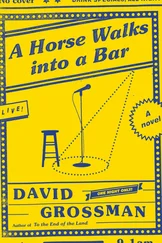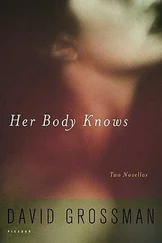You get to know the land around where you live, but when you leave town it’s not going to matter much to anybody. One day you set out, son of almost no one, prince of fuck-all, but you have your own secrets and you take them with you—a tarnished old locket you found in the abandoned mine in the forest, a sword you swiped from a forgotten storeroom, a kiss from a girl you met when her parents’ carriage broke an axle and she wandered off. Her parents came and got her before you even learned her name.
Someplace out there, you think there might be a crown, and maybe you deserve that crown. It’s north, that’s what everyone says, the crown Adric lost, but it’s under the mountains now, under a hundred tons of snow and ice. Lost a thousand years, frozen and buried, but not destroyed, not quite.
That night, gathered around my desk, the Heroes were noticeably shabbier than when I’d first met them. Brennan had run to fat; Leira’s face was windburned. Her hair was dry and frizzy, not the lustrous silk of a princess’s. Lorac’s hem was frayed and dirty, and Prendar kept glancing into the corners of the room with a jittery meth-head intensity. We’re your Heroes now, they seemed to say, like it or not.
“We told you the realm was in peril,” Prendar said. “Didst thou not believe us?”
“Okay, okay. But what are we going to do?” I asked.
“Lorac has a few things to say,” Brennan said quietly.
“Run the game,” Lorac said, and scooted himself forward. At character selection I chose Leira, who blushed a little.
REALMS OF GOLD III: Restoration (1987)
The screen showed what seemed to be a child’s drawing of a dirt road by a field of wheat. Sixteen-bit crayon colors, green grass, brown dirt, gray rocks. It was the cutting edge of mideighties graphics tech, the first graphical portrayal of the world of Endoria—whereas Realms II had been a chessboard map of the otherworld, Realms III was a blurry window into it. I was seeing Endoria—through a shitty sixteen-color graphics mode, but I was seeing it.
There was a figure at the left side of the screen, a forty-pixel-high woman with brown hair pulled back in a ponytail, blue eyes, and a button nose. She wore a leather jerkin and a dagger at her hip. The Heroes had just started the process of evolving from game pieces into people. It was (although Simon and Darren didn’t know it) the same way Dungeons & Dragons had started, the first role-playing game, when tabletop strategy-game rules had been modded to include individualized heroes with their own traits. In 1987 Leira, Brennan, Lorac, and Prendar were like late-Devonian fish struggling up past the high-tide mark on stubby, finny legs.
To me, as I huddled in front of the computer screen, the Four Heroes and I looked just like an old C64 magazine ad I remembered, a photograph of a kid and his computer and a bunch of dressed-up, sheepish-looking actors, there to show the grand worlds of imagination the game would unlock. Except, of course, that I was twenty-eight.
As Leira walked, pieces of the background scrolled past at different rates, giving a cute, crude sense of depth, another of Simon’s tricks. In the foreground, a muddy road. Then wet fields of stubble and orchards bounded by old stone walls. You passed the slowly dissolving outline of a house’s foundation, a broken catapult, and the shrine of a nameless deity, its features worn away but fresh flowers at its feet. Farther off, a shallow river; mountains; clouds.
After the final battle, an exhausted peace descended. Mournblade had disappeared. Perhaps carried off as a prize by a soldier. Perhaps buried under a mound of bodies slain by its wielder before the wielder himself was consumed. It was the closing of an era, and the gods had withdrawn even further from the world.
“I notice you haven’t been playing as me,” Prendar said as we walked, tapping the pointed toe of his shoe against my desk.
“I don’t really get you, to be honest. Aren’t thieves kind of… useless as a class? You’re like Brennan, but with weaker stats.”
“That’s why I have backstab. And poison. And I have infravision from my parents’ screwed-up marriage.”
“Cut him a little slack, Russell,” Leira said. “It’s not his fault he’s not game-balanced.” Ouch.
It starts to rain, and Leira dons a gray wool cloak with a hood. You could imagine her on that road since dawn, a whole day just walking through the fields and forests of the Long Marches in a cold rain that came and went. She probably slept in that cloak last night. She doesn’t mind the rain; you feel she could walk forever.
After a few hours she starts to pass farmers with carts full of produce and traders with covered wagons. A man stares at her from the back of a wagon, holding a crossbow inside, out of the rain. She can see the worn-down stock and the five mismatched quarrels in the quiver slung from the man’s shoulder.
You walk through the concentric walls of the old city, crumbling like smoke rings in the air, and into cobblestone streets. The sunset is banded with red, orange, and yellow, as elegant as it can be in the sixteen-color palette. The parallax effect is soothing and hypnotic. There is an armorer’s stall and I buy Leira a shield striped in blue and white.
“Stop,” said Lorac. “I will show you things few mortals ken. For this is WAFFLE, and mine is a dark knowledge.”
The renderer showed us what the world looked like, but Simon’s world engine WAFFLE pulled its strings. No one knew everything about how it worked. All they had was the API, the application programming interface (as laboriously explained to me by the guy sitting next to me that day, whose name I never successfully learned)—it fed parameters in and got data out, but it didn’t mess with what was inside. Simon built WAFFLE and he died, and left a black box at the heart of Black Arts.
Lorac led me through the rules.
a) It was a simulation, and it was pretty bossy. Designers didn’t run the economy, it did. If you wanted to say that a suit of leather armor cost ten gold pieces, you couldn’t tell it that. You might be able to jiggle a dozen other variables into place so that leather armor logically had to cost ten gold pieces. Or you could just let WAFFLE charge what it wanted to charge.
b) Objects and creatures acted the same way over a great many different contexts. A dagger was a dagger—as a character, you could pick up the dagger and use it. Any creature in the world, player-controlled or not, could also use it (provided the creature had hands, or a sufficiently prehensile tail).
c) Objects had a set of properties that made the same sense everywhere. An iron dagger was a weapon that could damage creatures; it could also damage certain objects (such as a length of rope). An iron dagger was magnetic; stone and bronze daggers were not. Flint struck against it would make a spark, and so forth.
d) Characters and creatures in the game had a decent amount of native artificial intelligence; in danger they would flee. They would pick up desirable loose objects, which was why that skeleton had looted my body the night I had played the game and discovered the bug. Later programmers had extended and added on to these behaviors, but the core remained. Like the simulator itself, character behavior wasn’t always easy to control.
e) Lastly, the engine (which is to say, Simon) was a complete bastard about saving your game. For a given character, it would save a record of your game when you quit; it would load that record when you started again. You couldn’t save during a game and keep playing, which meant that you couldn’t, for instance, save the game and then try something stupid or risky and then just reload your game if it didn’t work. The effect was that you played through as a single continuous narrative.
Читать дальше





![Ally Carter - [Gallagher Girls 01] I'd Tell You I Love You But Then I'd Have to Kill You](/books/262179/ally-carter-gallagher-girls-01-i-d-tell-you-i-lo-thumb.webp)






